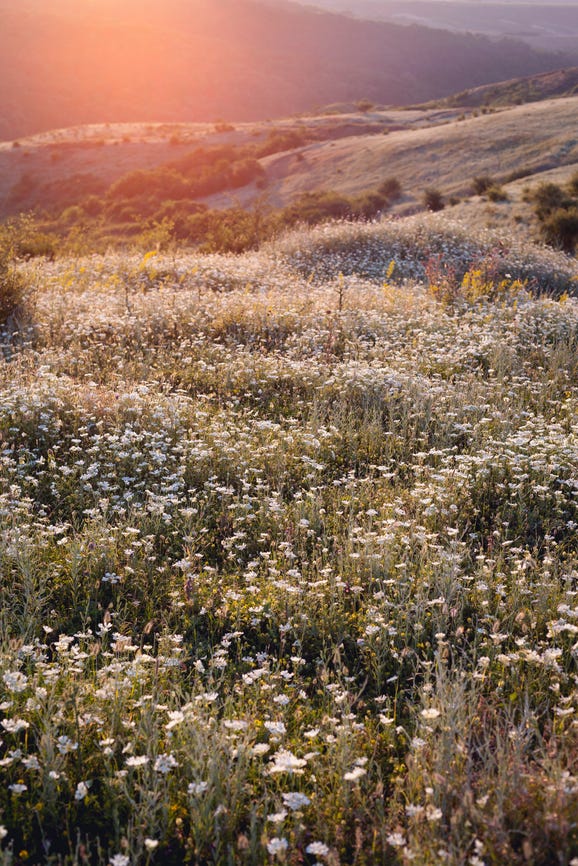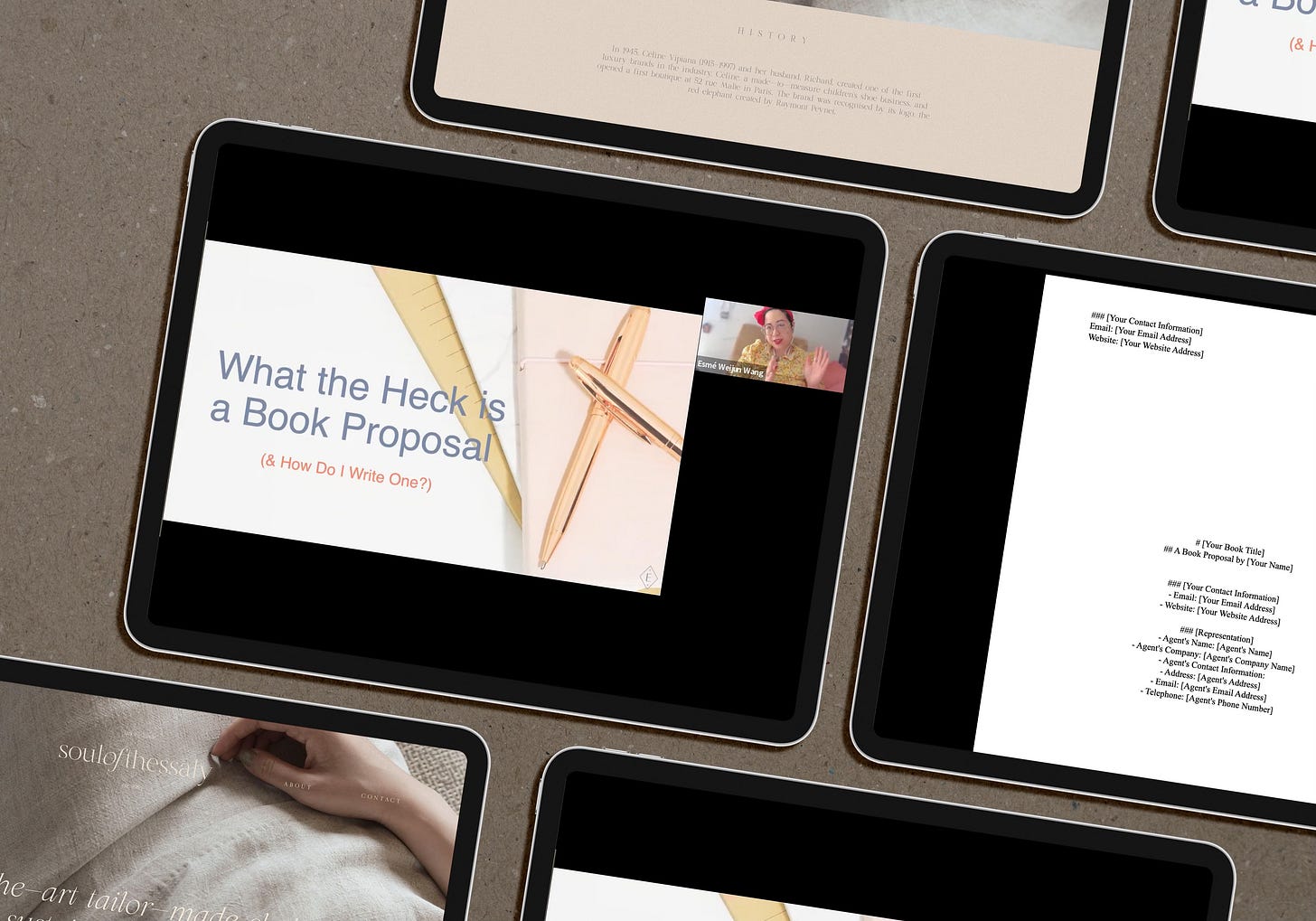To Find a Safe Place
some thoughts about real and imaginary safe places
If you’ve ever done guided meditation, particularly in the context of getting through difficult times, you may have been introduced to the concept of a safe place.
Essentially, it’s the concept of visualizing a place that makes you feel the safest—whether real or imagined—and using that visualization in your daily life. (This is something that has, of course, made me think about atrocities occurring worldwide in this very moment, where there is not even the semblance of a safe place except for what its citizens must struggle to imagine. I’ll say more on this later.)
When I was a child, I developed the idea of a safe place automatically; it’s remained the same ever since. As a sensitive, likely autistic* child who was also dealing with various forms of trauma—during upsetting times, or when I couldn’t otherwise get to sleep, I instinctively created a safe place that I could retreat to when I was afraid.
What my safe place looks like isn’t particularly important in terms of what your safe place might look or feel like, but I’ll share it with you anyway: it’s a grassy hill covered in wildflowers with a bench at the very top. As a condition of my safe place, I always need to start at the bottom of the hill and climb upward. Once I get to the bench, there’s a man sitting there—he’s always sitting there—and we talk. I tell him what’s going on. He counsels me and consoles me. This is not a man that I’ve ever actually met; it’s also not a hill that I’ve ever seen. My mental safe place has not changed in decades.
You may already have one such place in mind. If so, that’s fantastic. If not, I hope that you’ll be able to find some time sometime soon to find some quiet time. Close your eyes and imagine complete darkness. As the darkness fades into light, find yourself in your safe place. You can also search for “safe place” meditations on YouTube if you think that might help.
(A mental safe place is particularly helpful if you live with mental illness or chronic physical illness. But everyone goes through difficult times, which is why I don’t choose to limit the parameters of this lesson.)
Try this:
Spend some time finding an image that reminds you of your safe place. You might take this image yourself with a camera, cut it out of a magazine, draw it, or find it on Pinterest — whatever works for you.
Journal about being in that space. What does it look like? What does it smell like? Describe it with all of the senses you can access. Is it a real place? If so, what makes it safe for you?
If you find yourself in a stressful moment, take a deep breath and try to imagine your safe place. If you need a reminder, perhaps it might be helpful to carry a symbol of it with you—an image on your camera, or a pebble that reminds you of the beach. Having a physical reminder to act as a “worry stone” of sorts is one possible tool (crystals can be helpful for this, as well).
As soon as I thought about bringing this old lesson from my restorative journaling classes into my Substack, the awful images from Gaza in the last month rushed to mind. I’m not interested in getting into a political debate about whether or not it “makes sense” to bombard Gaza in order to get at Hamas. The death of civilians is always terrible; the number of civilians, including children, who have been killed lately, in Gaza and otherwise, is heart-wrenching.
One thing that I have been doing as of late, because cell and Internet service are frequently cut off to so many, is donating to volunteers on the ground who are getting eSims to people. Whether they’re used so that a little girl can play a distracting video game while surrounded by wreckage or so that people can organize to give out menstrual supplies or other kinds of medical help, it’s something that helps me feel that I can do something concrete. Learn more about how to do this at the Instagram account @connectinghumanity_.
And now for some things you might just find helpful…
If you’re hoping to create a nonfiction book, such as a memoir or personal essay collection, to be published by a traditional publisher, you’ll need to create a book proposal for the dream book of yours that you’re going to see on bookshelves someday. May I suggest this: 2024 is a great time to give it a go.
Using the discount code YOURGREATBOOK, you can get 20% off ($147 regular price) of my Book Proposal Kit, which includes my popular class, What the Heck is a Book Proposal (And How Do I Write One)?, as well as two sample book proposals that led to book deals and bestsellers.
As a former book proposal coach who’s worked with some of your favorite writers, I’ve created a kit that will help you not only gain confidence in the process, but to also actually write a book proposal. Click here to get your Book Proposal Kit today (and don’t forget the YOURGREATBOOK code!).
Here’s what one of my students has said about my book proposal class, which I’ve also taught at Stanford University:
"In two books and two agents, I have NEVER been schooled as hard or as well on the craft of writing an effective book proposal as I was by Esmé Weijun Wang. Esmé has an unfakeable passion for making practical, actionable information available to writers to ALL writers, at all career stages and backgrounds, living and working with all kinds of limitations. Her warm, inclusive teaching style offers a priceless act of service to the literary community." —Laura G.
And if you’re interested in the Rawness of Remembering: Restorative Journaling Through Difficult Times book, I’m currently working on making it available both as an e-book as well as a print book. But if you’re in a hurry to get the print book, it’s currently $18 and available. now; you can find it here. I just found out this week that someone is using it to teach lessons in a psychiatric ward where they work, which makes me so glad.
Until next time, and with all the love—
*I’m currently in the lengthy process of being assessed for an autism diagnosis.








I’ve also had the same mental safe place since I was a kid. It’s remained largely unchanged. I close my eyes, and always end up on the edge of a river with a small waterfall and high rock faces nearby. And someone, it depends on what I’m thinking through, emerges from the water like they’re stepping through the curtains on a stage. They’re not even wet most of the time (hey, it’s fantasy). What you said about having to earn it by walking up the hill also rang similar; for me, no one arrives until I settle on the right rock. 🤷♀️
Hi Esme. I just wrote about this in my newsletter, Live a Fulfilling Life. Thank you for your writing (today and every day) I used a visualization of a frozen mountain lake to get through some medical scans a couple of years ago. I’m a long time figure skater, so I conjured a realistic scene where I skate for miles, enjoying all the sensations of skating on a natural lake. Unconsciously, I visualized a scene of a real place that I must have seen in pictures. I think it’s Lake Louise in Canada. I need to get there someday! I’m new to Substack, so I don’t know if it’s cool to share a link to my article, but check it out if you have a minute. Best, Amanda